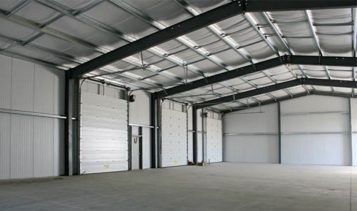In the growing industrial zones of Vancouver, choosing the right material for warehouse construction is more critical than ever. The demand for durable, cost-effective, and adaptable structures has brought two leading contenders to the forefront: steel and concrete. Both materials offer unique benefits, but when it comes to Vancouver warehouse buildings, each performs differently depending on the project’s goals, budget, and timeline.
This guide breaks down the advantages and limitations of steel and concrete to help builders, developers, and business owners make an informed decision.
Understanding the Role of Material in Warehouse Design
Warehouses are not just storage spaces—they’re operational hubs. From e-commerce fulfillment centers to logistics and manufacturing units, the structure must support heavy equipment, withstand environmental stress, and allow for future expansion. The material used directly influences the durability, design flexibility, and cost of the project.
Steel: Lightweight, Flexible, and Fast
Steel has long been a preferred material for industrial structures across North America. Its combination of strength and flexibility makes it ideal for large-span warehouse buildings.
Benefits of Steel for Warehouses
- Faster Construction Time
- Steel buildings tend to be prefabricated, where parts are produced off-site and quickly installed on-site.
- Reduces labor costs and shortens project timelines.
- Design Flexibility
- Enables large, open-span interior spaces free of interior load-bearing walls.
- Ideal for warehouse operations requiring open floor space.
- Lower Initial Costs
- Steel is generally more affordable than concrete, especially for medium-sized structures.
- Fewer foundation requirements can also reduce site preparation costs.
- Lightweight Material
- Puts less stress on the foundation, which is advantageous in areas with soil constraints.
- Recyclability
- Steel is an environmentally friendly option and can be recycled or reused at the end of its life cycle.
- Steel is an environmentally friendly option and can be recycled or reused at the end of its life cycle.
Limitations of Steel
- Susceptibility to Corrosion: In humid coastal environments like Vancouver, steel requires protective coatings to prevent rust.
- Thermal Conductivity: Steel absorbs and transfers heat quickly, which can increase insulation costs if not managed correctly.
Concrete: Solid, Secure, and Long-Lasting
Concrete structures are well known for their strength and durability. They have been used in industrial settings for decades and are often selected for high-security and fire-sensitive operations.
Advantages of Concrete in Warehouse Buildings
- Excellent Thermal Mass
- Naturally regulates temperature, which can lower energy usage over time.
- Maintains interior spaces cooler during warm weather and warmer during cold weather.
- Fire Resistance
- Concrete is non-combustible and doesn’t require additional fireproofing.
- Ideal for facilities storing flammable goods.
- Durability and Longevity
- Resistant to weathering, pests, and impacts.
- Minimal maintenance over the building's lifespan.
- Sound Insulation
- Concrete walls and floors offer better soundproofing compared to steel.
- Beneficial in densely populated or mixed-use areas.
- Vandal and Theft Resistance
- Provides a robust exterior that is difficult to breach, which adds a layer of security.
- Provides a robust exterior that is difficult to breach, which adds a layer of security.
Drawbacks of Concrete
- Higher Upfront Costs: More costly than steel in both material and labor.
- Longer Construction Time: Curing periods and site-intensive processes extend timelines.
- Less Design Flexibility: Difficult to modify or expand after initial construction is completed.
Which is Best for Vancouver Warehouse Buildings?
Choosing between steel and concrete depends on several project-specific factors. Here’s a breakdown of considerations:
1. Project Timeline
- If time is a constraint, steel is usually the better option due to quicker assembly.
2. Budget Constraints
- Steel tends to provide lower initial costs, and concrete can provide cost savings in energy and maintenance over the long term.
3. Environmental Considerations
- Steel has higher recyclability, while concrete offers better thermal performance and energy efficiency.
4. Security and Fire Safety
- For highly sensitive or high-risk storage, concrete provides superior fire resistance and structural integrity.
5. Expansion Plans
- Steel structures allow for easier modifications, making them ideal for growing businesses.
Conclusion: Making the Right Choice
For developers and business owners evaluating Vancouver warehouse buildings, the choice between steel and concrete should be driven by function, location, and long-term goals. Steel offers speed, flexibility, and affordability—ideal for companies needing a quick, adaptable solution. On the other hand, concrete provides unmatched durability, thermal efficiency, and security, making it suitable for specialized or high-risk storage needs.
Ultimately, the best material depends on balancing your immediate project needs with future operational demands. With Vancouver’s dynamic commercial landscape, selecting the right material can enhance the value and functionality of your warehouse investment.
#VancouverWarehouseBuildings #SteelVsConcrete #WarehouseConstruction #IndustrialDesign #BuildingMaterials #SteelBuildings #ConcreteWarehouses #ConstructionVancouver #WarehouseDevelopment

.png)

Comments
Post a Comment